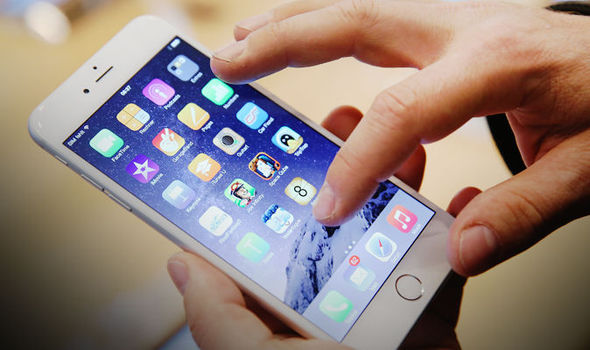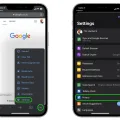Safari is a popular web browser used by millions of Apple users worldwide. Its sleek design, user-friendly interface, and seamless integration with other Apple devices make it a preferred choice for many. However, like any other software, Safari is not immune to occasional glitches and performance issues. One common problem that users may encounter is Safari freezing or crashing every time they try to open it. If you’re experiencing this frustrating issue, don’t worry – there are several potential fixes that you can try.
1. Force Quit Safari: The first step is to force quit Safari and relaunch it. To do this, click on the Apple menu at the top left corner of your screen and select “Force Quit.” In the window that appears, locate Safari and click on “Force Quit.” Wait for a few seconds and then reopen Safari to see if the issue persists.
2. Clear Cache Files: Accumulated cache files can sometimes cause Safari to freeze or crash. To clear these files, go to the Safari menu and select “Preferences.” In the window that opens, click on the “Privacy” tab and then click on “Manage Website Data.” A new window will appear with a list of websites. Click on “Remove All” to clear all cache files. Restart Safari and check if the problem is resolved.
3. Delete Website Data: In addition to cache files, Safari also stores website data such as cookies and browsing history. Clearing this data can help improve Safari’s performance. To do this, go to the Safari menu and select “Preferences.” In the “Privacy” tab, click on “Remove All Website Data.” Confirm the action and restart Safari.
4. Delete Browser Extensions: Sometimes, incompatible or outdated browser extensions can cause Safari to freeze or crash. To check if this is the case, go to the Safari menu and select “Preferences.” Click on the “Extensions” tab and disable all extensions by unchecking the boxes. Restart Safari and see if the issue persists. If Safari now works fine, you can enable the extensions one by one to identify the problematic one.
5. Update macOS: Outdated software can often lead to compatibility issues and performance problems. Ensure that your macOS is up to date by clicking on the Apple menu and selecting “Software Update.” If an update is available, download and install it. This may include updates for Safari as well, which can help resolve any bugs or glitches causing the freezing issue.
By following these potential fixes, you should be able to troubleshoot and resolve the problem of Safari freezing or crashing every time you open it. Remember to always keep your software updated and regularly clear cache and browsing data to ensure smooth browsing experience. If the issue persists, you may need to seek further assistance from Apple Support or consider using an alternative web browser until a solution is found.

How Do You Stop Safari From Freezing?
To stop Safari from freezing, you can try the following steps:
1. Close Safari: If Safari is frozen and unresponsive, force quit the application by pressing Command + Option + Esc, selecting Safari, and clicking on the Force Quit button. This will shut down Safari completely.
2. Clear Cache: Safari stores temporary files and website data in its cache, which can sometimes cause freezing issues. To clear the cache, go to Safari > Preferences > Privacy, and click on the “Manage Website Data” button. Remove all the website data by selecting it and clicking on the “Remove” button.
3. Reset Safari: Another option is to reset Safari completely. This will remove all your browsing history, cookies, and other data. To do this, go to Safari > Clear History and Website Data, and select “all history.” Confirm your choice by clicking on the “Clear History” button.
4. Disable Extensions: Browser extensions can sometimes conflict with Safari and cause freezing. To check if an extension is causing the issue, go to Safari > Preferences > Extensions and disable all extensions. Restart Safari and see if the freezing problem persists. If not, enable the extensions one by one to identify the problematic one.
5. Update macOS: Outdated macOS versions can sometimes lead to compatibility issues with Safari. Make sure your operating system is up to date by going to the Apple menu > About This Mac > Software Update. If an update is available, install it and restart your Mac.
By following these steps, you can troubleshoot and hopefully resolve freezing issues with Safari.
What Causes Safari to Stop Responding?
There can be various reasons for Safari to stop responding on your iPhone. Some common causes include:
1. Software glitches: Safari might freeze or stop responding due to software bugs or glitches. These issues can occur when there are conflicts with other apps or when the Safari app itself is not functioning properly.
2. Outdated iOS: Using an outdated version of iOS can lead to compatibility issues and cause Safari to stop responding. It is important to keep your iPhone’s operating system up to date to ensure smooth app performance.
3. Network connectivity problems: If you have a weak or unstable internet connection, Safari may struggle to load webpages and eventually stop responding. This can happen when you are in an area with poor network coverage or if there are issues with your Wi-Fi or cellular data connection.
4. Cache and data overload: Accumulated cache and browsing data can overload Safari’s memory and cause it to become unresponsive. Clearing your browsing history, cache, and cookies regularly can help prevent this issue.
5. Too many open tabs: Having too many tabs open in Safari can put a strain on your device’s resources and cause the app to freeze or crash. Closing unnecessary tabs can help improve Safari’s performance.
6. Hardware limitations: Older iPhone models or devices with low storage space and RAM may struggle to handle resource-intensive tasks, leading to Safari freezing or becoming unresponsive.
To fix Safari issues, you can try the following solutions:
– Update iOS: Check if there are any available updates for your iPhone’s operating system and install them. This can help fix compatibility issues and improve app performance.
– Clear cache and browsing data: Open Safari settings and clear your browsing history, cache, and cookies. This can free up memory and resolve any conflicts caused by stored data.
– Close unnecessary tabs: If you have multiple tabs open in Safari, close the ones you don’t need. This can help reduce the strain on your device’s resources.
– Restart your device: Sometimes, a simple restart can resolve temporary glitches and get Safari working again. Press and hold the power button until you see the “slide to power off” option, then swipe to turn off your iPhone. After a few seconds, press and hold the power button again to turn it back on.
– Reset network settings: If you suspect network connectivity issues, you can try resetting your iPhone’s network settings. Go to Settings > General > Reset > Reset Network Settings. Note that this will remove your saved Wi-Fi passwords, so make sure you have them handy.
If the above solutions don’t work, you can consider contacting Apple support or visiting an authorized service center for further assistance.
Why is Safari Glitching So Much?
There could be several reasons why Safari is glitching on your iPhone or iPad. Here are some possible causes:
1. Outdated Safari version: If you haven’t updated Safari to the latest version, it might be prone to glitches. Make sure to check for any available updates in the App Store and install them.
2. Insufficient device storage: If your device is running low on storage space, it can affect the performance of Safari. Clearing out unwanted files, apps, and photos can free up space and potentially resolve glitches.
3. Too many open tabs: Having a large number of open tabs in Safari can overload the browser and cause it to glitch. Try closing unnecessary tabs or using the tab management feature to organize them better.
4. Corrupted cache and cookies: Over time, Safari accumulates cache and cookies, which can lead to glitches. Clearing these out can help resolve performance issues. You can do this by going to Settings > Safari > Clear History and Website Data.
5. Network connectivity problems: Poor internet connection or Wi-Fi issues can also cause Safari to glitch. Try switching to a different network or restarting your Wi-Fi router to see if it resolves the problem.
6. Software conflicts or bugs: Sometimes, glitches can occur due to conflicts with other apps or bugs in the Safari software itself. Ensure that all your apps and iOS are up to date, as new updates often include bug fixes.
If Safari continues to glitch after trying these troubleshooting steps, you may consider resetting your device’s network settings or even performing a factory reset as a last resort. Remember to back up your data before taking any drastic measures.
Conclusion
Safari is a popular web browser used by many Mac users. However, it is not immune to issues such as crashing or slow performance. If you find that Safari keeps crashing on your Mac, there are several potential fixes you can try.
Firstly, force quitting Safari is a simple yet effective solution. You can do this by clicking on the Apple menu, selecting “Force Quit”, and choosing Safari from the list of open applications. This will close Safari completely and allow you to restart it fresh.
Another possible fix is to clear the cache files in Safari. Caches can sometimes become corrupted and cause issues with the browser. To clear the cache, go to the Safari menu, select “Preferences”, and click on the “Privacy” tab. From there, click on “Manage Website Data” and remove any unnecessary cache files.
Deleting website data, such as browsing history and cookies, can also help speed up Safari. To do this, go to the Safari menu, select “Preferences”, and click on the “Privacy” tab. From there, click on “Remove All Website Data” to clear out any stored data from websites.
If you have any browser extensions installed, they may be causing conflicts and leading to Safari crashes. Try disabling or removing any extensions to see if that resolves the issue.
Lastly, keeping your macOS up to date is crucial for the smooth functioning of Safari. Regularly check for updates in the App Store and install any available updates to ensure that your operating system is optimized for Safari.
By following these potential fixes, you can troubleshoot and resolve issues with Safari on your Mac. Remember to also keep your device clean and free from unnecessary files or applications, as this can contribute to improved browser performance.








